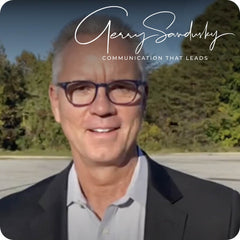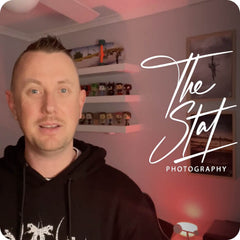Email subject lines are the gateway to your message, and their effectiveness can make or break your email marketing efforts. Whether you're a freelancer pitching services, an e-commerce manager launching a new product, or a PR professional reaching out to media, the right subject line can significantly enhance your communication impact. Join us as we uncover the secrets to creating subject lines that not only capture attention but also inspire action, driving your email campaigns to new heights.
What Are Email Subject Lines?
Email subject lines are the brief yet powerful phrases that appear in a recipient's inbox, serving as the first impression of your email. They play a crucial role in determining whether an email gets opened or ignored, acting as a gateway to the content within. A well-crafted subject line can capture attention, spark curiosity, and convey the essence of the message, all within a limited character count. For marketers, sales teams, and content creators, mastering the art of writing compelling subject lines is essential for enhancing engagement, driving conversions, and achieving communication goals.
What Makes a Good Email Subject Line?
A good email subject line is one that effectively captures the recipient's attention and compels them to open the email, much like how email subject lines can be strategically crafted to achieve high open rates. It should be concise, clear, and relevant to the content of the email, providing a glimpse of the value or information contained within. Personalization and urgency can enhance its appeal, making it more relatable and time-sensitive. Additionally, a successful subject line often employs creativity and curiosity, encouraging the reader to explore further. By balancing these elements, marketers and communicators can craft subject lines that not only stand out in crowded inboxes but also drive higher engagement and response rates.
What Are The Different Types of Email Subject Lines?
- Curiosity-Driven Subject Lines: These subject lines pique the reader's interest by hinting at intriguing content without giving away too much, encouraging them to open the email to learn more.
- "What’s the Secret Behind Our Best-Selling Product?"
- "You Won’t Believe What We’ve Just Launched!"
- "This One Trick Will Change Your Routine Forever"
- Personalized Subject Lines: By incorporating the recipient's name or specific details relevant to them, these subject lines create a sense of familiarity and connection, increasing the likelihood of engagement.
- "John, Discover Your Exclusive Offer Inside!"
- "Sarah, Here’s a Special Deal Just for You"
- "Mark, Unlock Your Personalized Recommendations"
- Urgency and Scarcity Subject Lines: These lines create a sense of immediacy or limited availability, prompting readers to act quickly to avoid missing out on an opportunity or offer.
- "Last Chance: Sale Ends Tonight!"
- "Only 5 Spots Left – Reserve Yours Now!"
- "Hurry! Limited Stock Available"
- Question-Based Subject Lines: Posing a question in the subject line can engage the reader's curiosity and prompt them to seek the answer within the email.
- "Are You Ready to Transform Your Business?"
- "What’s Holding You Back from Success?"
- "Want to Know the Secret to Better Health?"
- How-To Subject Lines: These lines promise practical advice or solutions, appealing to readers looking for guidance or tips on a particular topic.
- "How to Boost Your Productivity in 5 Easy Steps"
- "Learn How to Master Email Marketing Today"
- "How to Create Stunning Visuals with Ease"
- Listicle Subject Lines: By indicating a list format, these subject lines suggest easily digestible content, often appealing to readers who prefer quick, structured information.
- "Top 10 Tips for a Successful Launch"
- "5 Reasons Why You Need This Product"
- "7 Ways to Improve Your Daily Routine"
- Announcement Subject Lines: Used to convey news or updates, these lines are direct and informative, often highlighting new products, features, or events.
- "Introducing Our New Feature: Check It Out!"
- "We’ve Got Big News: Read All About It"
- "Announcing Our Latest Product Line"
- Humorous Subject Lines: Injecting humor can make a subject line memorable and engaging, appealing to readers who appreciate a lighthearted approach.
- "Oops, We Did It Again – Another Sale!"
- "Our Products Are Cheaper Than Therapy"
- "Warning: This Email Contains Awesomeness"
- Fear of Missing Out (FOMO) Subject Lines: These lines leverage the reader's desire to stay informed or be part of something exclusive, encouraging prompt action.
- "Don’t Miss Out on This Exclusive Offer!"
- "Be the First to Know About Our New Release"
- "Join the Club – Limited Membership Available"
What Is The Required Length For Email Subject Lines?
The ideal length for email subject lines is typically around 50 characters or less. This length ensures that the subject line is fully visible across most email clients and devices, including mobile phones, where space is limited. Keeping subject lines concise not only helps in maintaining clarity but also increases the likelihood of capturing the recipient's attention quickly. While it's important to be brief, the subject line should still convey the essence of the email's content and entice the reader to open it. Balancing brevity with informativeness is key to crafting effective subject lines that drive engagement.
How To Craft Effective Email Subject Lines
Understand Your Audience
The first step in crafting effective email subject lines is to thoroughly understand your audience. Identify their preferences, interests, and pain points to tailor your subject lines accordingly. Consider segmenting your email list based on demographics, behavior, or past interactions to create more personalized and relevant subject lines that resonate with each group.
Keep It Concise
Email subject lines should be concise and to the point. Aim for a length of 50 characters or less to ensure they are fully visible on most devices, including mobile. A short and clear subject line is more likely to capture attention quickly and convey the message's essence without overwhelming the reader.
Use Action-Oriented Language
Incorporate action-oriented language to encourage readers to take the desired action. Verbs like "discover," "learn," "get," or "unlock" can create a sense of urgency and motivate recipients to open the email. Ensure the action aligns with the email's content to maintain consistency and trust.
Personalize When Possible
Personalization can significantly enhance the effectiveness of your subject lines. Use the recipient's name or reference their past interactions to create a sense of familiarity and relevance. Personalized subject lines can increase open rates by making the email feel more tailored to the individual.
Create a Sense of Urgency
Instilling a sense of urgency can prompt immediate action. Use phrases like "limited time offer," "ending soon," or "last chance" to convey that the opportunity is fleeting. However, ensure that the urgency is genuine and not overused, as this can lead to skepticism over time.
Test and Optimize
Regularly test different subject lines to determine what resonates best with your audience. A/B testing can provide valuable insights into which styles, lengths, or tones are most effective. Use these insights to continuously refine and optimize your subject lines for better performance.
Avoid Spam Triggers
Be mindful of words and phrases that might trigger spam filters, such as "free," "guarantee," or excessive use of exclamation marks. Craft your subject lines to sound natural and trustworthy, avoiding overly promotional language that could land your email in the spam folder.
Align with Email Content
Ensure that your subject line accurately reflects the content of the email. Misleading subject lines can lead to disappointment and erode trust with your audience. A clear and honest subject line sets the right expectations and enhances the overall user experience.
Should Email Subject Lines Be Different For Each Niche?
Yes, email subject lines should be tailored to each niche to maximize their effectiveness. Different audiences have unique preferences, interests, and communication styles, which means a one-size-fits-all approach may not resonate across various segments. By customizing subject lines to align with the specific needs and expectations of each niche, you can create more relevant and engaging messages. This personalization helps in building a stronger connection with the audience, increasing the likelihood of higher open rates and engagement. Understanding the nuances of each niche allows marketers to craft subject lines that speak directly to their target audience, enhancing the overall impact of their email campaigns.
Email Subject Line Examples
Digital Marketers
- "Unlock the Secrets to Boosting Your Click-Through Rates Today!"
- "Transform Your Campaigns: 7 Email Marketing Hacks"
- "Maximize Engagement: The Ultimate Guide for Marketers"
- "Increase Your ROI: Proven Email Strategies"
- "Discover the Latest Trends in Digital Marketing"
Small Business Owners
- "5 Strategies to Skyrocket Your Small Business Growth"
- "Unlock New Opportunities: Small Business Success Tips"
- "Navigate Challenges: Essential Tools for Entrepreneurs"
- "Boost Your Revenue: Small Business Marketing Tactics"
- "Master the Art of Customer Retention for Small Businesses"
Sales Teams
- "Close More Deals: Proven Techniques for Sales Success"
- "Revamp Your Sales Strategy with These Expert Tips"
- "Boost Your Pipeline: Innovative Sales Tactics Revealed"
- "Master Negotiation: Sales Skills for Closing Deals"
- "Increase Your Conversion Rates: Sales Best Practices"
Freelancers
- "How to Land Your Next Big Client: Tips for Freelancers"
- "Freelancer's Guide to Building a Thriving Business"
- "Elevate Your Freelance Career: Strategies for Success"
- "Maximize Your Earnings: Pricing Strategies for Freelancers"
- "Build a Strong Portfolio: Tips for Freelance Success"
Content Creators
- "Create Content That Captivates: Your Ultimate Guide"
- "Engage Your Audience: Content Creation Tips"
- "From Ideas to Impact: Mastering Content Strategy"
- "Boost Your Reach: Social Media Tips for Creators"
- "Monetize Your Content: Strategies for Creators"
E-commerce Sellers
- "Exclusive Offer: Boost Your Sales with These Tactics"
- "Drive More Traffic: E-commerce Marketing Secrets"
- "Convert Browsers to Buyers: E-commerce Success Tips"
- "Optimize Your Product Listings: E-commerce Best Practices"
- "Enhance Customer Experience: Tips for E-commerce Growth"
Public Relations Professionals
- "Craft Headlines That Grab Attention: PR Tips Inside"
- "Elevate Your PR Game: Strategies for Media Success"
- "Build Stronger Media Relationships with These Tips"
- "Navigate Crisis Communication: PR Best Practices"
- "Maximize Your PR Impact: Innovative Outreach Techniques"
Customer Support Teams
- "Enhance Customer Satisfaction with These Proven Methods"
- "Transform Your Support Strategy: Customer Success Tips"
- "Deliver Exceptional Service: Best Practices for Support Teams"
- "Resolve Issues Faster: Customer Support Efficiency Tips"
- "Build Customer Loyalty: Strategies for Support Teams"
Email Copywriters
- "Master the Art of Persuasive Email Copywriting"
- "Write Emails That Convert: Copywriting Secrets"
- "Craft Compelling Copy: Tips for Email Success"
- "Boost Your Open Rates: Email Copywriting Techniques"
- "Engage Your Audience: Creative Email Writing Tips"
Influencers
- "Elevate Your Brand: Tips for Influencer Success"
- "Grow Your Influence: Strategies for Social Media Stars"
- "Monetize Your Platform: Influencer Marketing Insights"
- "Engage Your Followers: Content Tips for Influencers"
- "Build Strong Partnerships: Influencer Collaboration Tips"
Health and Wellness Coaches
- "Transform Lives: Coaching Tips for Health Professionals"
- "Boost Your Wellness Business: Proven Strategies"
- "Engage Clients: Effective Health Coaching Techniques"
- "Expand Your Reach: Marketing Tips for Wellness Coaches"
- "Enhance Client Outcomes: Wellness Coaching Best Practices"
Financial Advisors
- "Guide Your Clients to Financial Freedom: Expert Tips"
- "Build Trust: Strategies for Successful Financial Planning"
- "Navigate Market Changes: Insights for Financial Advisors"
- "Enhance Your Advisory Skills: Financial Planning Techniques"
- "Grow Your Client Base: Marketing Tips for Advisors"
Real Estate Agents
- "Close More Deals: Real Estate Success Strategies"
- "Market Your Listings: Innovative Real Estate Tips"
- "Build Client Relationships: Real Estate Best Practices"
- "Enhance Your Negotiation Skills: Real Estate Insights"
- "Boost Your Visibility: Marketing Tips for Real Estate Agents"
Educators
- "Engage Your Students: Innovative Teaching Techniques"
- "Enhance Learning: Tips for Educators"
- "Transform Your Classroom: Strategies for Success"
- "Incorporate Technology: Modern Teaching Methods"
- "Foster Student Growth: Effective Educational Practices"
Nonprofit Organizations
- "Increase Donations: Fundraising Tips for Nonprofits"
- "Engage Your Community: Nonprofit Outreach Strategies"
- "Maximize Impact: Effective Nonprofit Management Tips"
- "Build Strong Partnerships: Collaboration Tips for Nonprofits"
- "Enhance Volunteer Engagement: Strategies for Nonprofits"
Event Planners
- "Create Unforgettable Events: Planning Tips Inside"
- "Boost Attendance: Innovative Event Marketing Strategies"
- "Streamline Your Planning Process: Event Success Tips"
- "Engage Attendees: Interactive Event Ideas"
- "Maximize Your Event's Impact: Post-Event Strategies"
Travel Agents
- "Plan the Perfect Getaway: Travel Tips for Agents"
- "Boost Your Bookings: Travel Marketing Strategies"
- "Engage Clients: Travel Planning Best Practices"
- "Discover Hidden Gems: Unique Travel Destinations"
- "Enhance Your Client Experience: Travel Service Tips"
Tech Startups
- "Innovate and Grow: Strategies for Tech Startups"
- "Navigate the Startup World: Tips for Tech Entrepreneurs"
- "Build Your Brand: Marketing Insights for Tech Startups"
- "Secure Funding: Investment Tips for Startups"
- "Scale Your Business: Growth Strategies for Tech Startups"
Fashion Designers
- "Create Stunning Collections: Fashion Design Tips"
- "Market Your Brand: Fashion Industry Success Strategies"
- "Engage Your Audience: Fashion Marketing Techniques"
- "Stay Ahead of Trends: Insights for Fashion Designers"
- "Build a Strong Brand Identity: Fashion Branding Tips"
Fitness Instructors
- "Transform Your Classes: Fitness Instruction Tips"
- "Engage Clients: Strategies for Fitness Professionals"
- "Grow Your Fitness Business: Marketing Insights"
- "Enhance Your Training Techniques: Fitness Best Practices"
- "Build a Loyal Client Base: Tips for Fitness Instructors"
What Type Of Email Subject Lines Have The Highest Open Rates?
Email subject lines that achieve the highest open rates typically incorporate elements of personalization, urgency, and curiosity. Personalized subject lines, which include the recipient's name or reference specific interests, create a sense of connection and relevance. Urgency-driven lines, using phrases like "limited time" or "act now," prompt immediate action by suggesting scarcity or time-sensitive opportunities. Additionally, subject lines that spark curiosity by hinting at intriguing content or posing a compelling question can entice recipients to open the email to discover more. By combining these elements, marketers can craft subject lines that stand out in crowded inboxes and drive higher engagement.
Best Practices For Optimization and Testing Email Subject Lines
- A/B Testing: Regularly conduct A/B tests to compare different subject lines and determine which ones perform best. This helps identify the most effective wording, length, and style for your audience.
- Analyze Open Rates: Monitor open rates to gauge the effectiveness of your subject lines. Use this data to refine your approach and focus on strategies that yield the highest engagement.
- Segment Your Audience: Tailor subject lines to different audience segments based on demographics, behavior, or past interactions to increase relevance and engagement.
- Use Clear and Concise Language: Keep subject lines short and to the point, ensuring they are easily readable on all devices, especially mobile.
- Incorporate Personalization: Personalize subject lines with the recipient's name or relevant details to create a more personalized experience and increase open rates.
- Create a Sense of Urgency: Use time-sensitive language to encourage immediate action, but ensure the urgency is genuine to maintain trust.
- Avoid Spam Triggers: Steer clear of words and phrases that might trigger spam filters, such as "free" or excessive punctuation, to ensure your emails reach the inbox.
- Leverage Curiosity: Craft subject lines that pique curiosity by hinting at intriguing content or posing a question, prompting recipients to open the email to learn more.
- Align with Content: Ensure subject lines accurately reflect the email's content to set the right expectations and maintain credibility with your audience.
- Review Competitor Strategies: Analyze successful subject lines from competitors to gain insights and inspiration for your own campaigns.
How To Prioritize Targeting In Email Subject Lines?
Prioritizing targeting in email subject lines involves understanding and segmenting your audience to deliver personalized and relevant messages. Begin by analyzing your audience's demographics, behaviors, and preferences to create distinct segments. Tailor your subject lines to address the specific needs, interests, or pain points of each segment, ensuring that the content resonates with them on a personal level. Use data-driven insights to identify which segments are most valuable or have the highest potential for engagement, and prioritize crafting subject lines that speak directly to these groups. By aligning your subject lines with the unique characteristics of each audience segment, you can enhance relevance, increase open rates, and drive more meaningful interactions.
Common Email Subject Lines Mistakes To Avoid
Being Too Vague
Avoid subject lines that are unclear or lack specific information.
- Example: "Important Update" (Digital Marketers)
- Example: "Exciting News Inside" (Content Creators)
- Example: "Check This Out" (Tech Startups)
Overusing Capital Letters
Excessive capitalization can come across as shouting and may trigger spam filters.
- Example: "LIMITED TIME OFFER!" (E-commerce Sellers)
- Example: "HUGE DISCOUNTS NOW!" (Fashion Designers)
- Example: "ACT FAST!" (Sales Teams)
Using Clickbait
Misleading subject lines can damage trust and lead to higher unsubscribe rates.
- Example: "You've Won a Free Vacation!" (Travel Agents)
- Example: "This Will Change Your Life!" (Health and Wellness Coaches)
- Example: "Unbelievable Results!" (Fitness Instructors)
Excessive Punctuation
Overusing exclamation marks or question marks can appear unprofessional.
- Example: "Amazing Deals!!!" (Sales Teams)
- Example: "Want to Know More???" (Freelancers)
- Example: "Don't Miss Out!!!" (Event Planners)
Being Too Long
Lengthy subject lines may get cut off, especially on mobile devices.
- Example: "Discover the Top 10 Strategies for Increasing Your Business Revenue and Customer Engagement" (Small Business Owners)
- Example: "Learn How to Improve Your Marketing Strategy with These Simple and Effective Tips" (Digital Marketers)
- Example: "Find Out How to Transform Your Classroom with Innovative Teaching Techniques" (Educators)
Lacking Personalization
Generic subject lines fail to connect with the recipient on a personal level.
- Example: "Newsletter Update" (Content Creators)
- Example: "Monthly News" (Nonprofit Organizations)
- Example: "Your Weekly Digest" (Email Copywriters)
Ignoring Audience Segmentation
Sending the same subject line to all recipients can reduce relevance.
- Example: "New Product Launch" (Tech Startups)
- Example: "Upcoming Event" (Event Planners)
- Example: "Latest News" (Public Relations Professionals)
Using Spam Trigger Words
Words like "free" or "guarantee" can cause emails to be marked as spam.
- Example: "Free Money-Making Tips" (Financial Advisors)
- Example: "Guaranteed Results" (Fitness Instructors)
- Example: "Win Big Prizes" (E-commerce Sellers)
Failing to Convey Value
Subject lines that don't highlight the benefit or value may be ignored.
- Example: "Monthly Report" (Public Relations Professionals)
- Example: "Weekly Update" (Customer Support Teams)
- Example: "Latest Insights" (Financial Advisors)
Not Testing Variations
Relying on a single subject line without testing can miss opportunities for optimization.
- Example: "Weekly Update" (Customer Support Teams)
- Example: "Your Monthly Newsletter" (Influencers)
- Example: "Latest Offers" (E-commerce Sellers)
Conclusion
Crafting effective email subject lines is a crucial skill that can significantly impact the success of your email marketing campaigns. By understanding your audience, personalizing your approach, and avoiding common pitfalls, you can create subject lines that capture attention and drive engagement. Testing and optimizing your subject lines based on data-driven insights will further enhance their effectiveness, ensuring that your messages resonate with recipients and achieve your desired outcomes. Whether you're a digital marketer, small business owner, or freelancer, mastering the art of email subject lines will empower you to connect more meaningfully with your audience and elevate your communication strategy.
Final Thoughts
Transform your brand identity with Artlogo, where we create unique branding elements such as handwritten signatures, business cards, and social media icons. Our expert designs, combined with engaging email subject lines, ensure your business captures attention and leaves a lasting impression. Discover the Artlogo difference today. Ready to make your mark? Explore our wide range of custom products here!
Sources



























Share to: